- News
- Reviews
- Bikes
- Components
- Bar tape & grips
- Bottom brackets
- Brake & gear cables
- Brake & STI levers
- Brake pads & spares
- Brakes
- Cassettes & freewheels
- Chains
- Chainsets & chainrings
- Derailleurs - front
- Derailleurs - rear
- Forks
- Gear levers & shifters
- Groupsets
- Handlebars & extensions
- Headsets
- Hubs
- Inner tubes
- Pedals
- Quick releases & skewers
- Saddles
- Seatposts
- Stems
- Wheels
- Tyres
- Tubeless valves
- Accessories
- Accessories - misc
- Computer mounts
- Bags
- Bar ends
- Bike bags & cases
- Bottle cages
- Bottles
- Cameras
- Car racks
- Child seats
- Computers
- Glasses
- GPS units
- Helmets
- Lights - front
- Lights - rear
- Lights - sets
- Locks
- Mirrors
- Mudguards
- Racks
- Pumps & CO2 inflators
- Puncture kits
- Reflectives
- Smart watches
- Stands and racks
- Trailers
- Clothing
- Health, fitness and nutrition
- Tools and workshop
- Miscellaneous
- Buyers Guides
- Features
- Forum
- Recommends
- Podcast
review
£56.00
VERDICT:
Very smooth and supple tyres but not the best puncture protection and not that affordable
Weight:
608g
Contact:
At road.cc every product is thoroughly tested for as long as it takes to get a proper insight into how well it works. Our reviewers are experienced cyclists that we trust to be objective. While we strive to ensure that opinions expressed are backed up by facts, reviews are by their nature an informed opinion, not a definitive verdict. We don't intentionally try to break anything (except locks) but we do try to look for weak points in any design. The overall score is not just an average of the other scores: it reflects both a product's function and value – with value determined by how a product compares with items of similar spec, quality, and price.
What the road.cc scores meanGood scores are more common than bad, because fortunately good products are more common than bad.
- Exceptional
- Excellent
- Very Good
- Good
- Quite good
- Average
- Not so good
- Poor
- Bad
- Appalling
You guessed it, the Challenge Paris-Roubaix Pro Series tyres are named after the most brutal race on the professional calendar, the cobbles of northern France requiring careful tyre and pressure choice. What works on the cobbles also works on UK roads: these are a good choice if you want a high-end premium tyre that will provide a very smooth and supple ride, but the trade-off is they are tricky to fit the first time, puncture resistance isn't amazing, and there's the hefty price tag.
- Pros: Smooth, fast, comfortable, supple, look great
- Cons: Not the best puncture protection, bugger to fit first time
How wide a tyre you go is a big topic these days, but it's largely determined by what your bike will allow. The pros lean towards 27-30mm tyres for Paris-Roubaix, and the former is a good width for dealing with typical UK road surfaces. The bigger tyre (compared to a skinny 23) lets you run lower pressures. I happily rode with 65-70psi for my 67kg body weight, resulting in a silky smooth ride over the rougher roads. At these pressures the tyres feel very fast with low rolling resistance.
> Find your nearest dealer here
Much of that smoothness also comes down to the exceptional suppleness that is a key feature of these tyres. Challenge makes them with a 300TPI (threads per inch) SuperPoly casing, and the construction is different to a normal tyre: the tread is in fact glued atop the casing and they're not vulcanised like regular tyres. That explains their flat appearance when you pull them out of the box and does make the first installation a little tricky as the tyre isn't naturally curved. Once on – which might take a bit longer than usual and might involve some mild swearing – they are just fine and dandy.
The upshot of your effort to install them is that very supple ride. It just feels like the tyre 'gives' more than some when it encounters a bump or hole, soaking up the surface imperfection rather than jolting your handlebar. They seem to do a better job than some other tyres I've tested of a similar width. Boshing around my country lanes on these tyres is a silky smooth experience, and they deal with sudden encounters with holes and cracks really well too.
The tread has a serrated herringbone texture that is there to deliver extra grip on slippery roads, but as we know tread pattern doesn't really make much difference on a bicycle tyre especially in the wet, tread compound is far more important. I found the tyres to deliver a reassuring feel through faster corners with patchy areas of wet and a smattering of horse poo and farmyard muck. You can push them pretty hard and they grip really well, giving you back decent feedback too about what is happening at the contact patch.
Tan sidewalls are hot right now. I'm a fan. They look crispy fresh when new, but you'll need to pay attention to them when cleaning the bike as they do get grubby over time. You can buy them with a black sidewall if you're not so keen on the tan wall.
There is a double layer puncture protection under the tread, but I'm not convinced it's up to the task and is no match for some tyres I've used, such as the Bontrager AW3 Hard-Case Lite to pick one example. I punctured the first time out, which I thought was just bad luck, but then punctured on the second ride, and not on the same tyre. Both times thorns were the culprit.
Bad luck perhaps, but while they are tough tyres, and appear to handle holes and impacts well, they just don't seem to be as resilient to sharp objects as some other tyres with beefier puncture belts. I tested latex and butyl inner tubes as well and punctured both.
> Buyer's Guide: 18 of the best winter tyres
I guess that's a compromise you make for such a lovely feeling tyre with a competitive weight. It make them hard to recommend as a solid winter training tyre; instead I think they are a tyre best saved for better conditions when you want the smoothness and rolling speed, such as autumn and spring when the weather is generally a bit kinder. They're not a fit and forget tyre – at £56 per wheel (cheaper if you shop around) they're a bit expensive for that sort of treatment, and the wear rate is a bit high. All those factors suggest that they are, as the name implies, a competition tyre, so save them for special Sunday rides when you want the best performance and feel.
Verdict
Very smooth and supple tyres but not the best puncture protection and not that affordable
road.cc test report
Make and model: Challenge Paris-Roubaix Pro tyre
Size tested: 700 x 27mm
Tell us what the product is for and who it's aimed at. What do the manufacturers say about it? How does that compare to your own feelings about it?
"Challenge have a pedigree for success over tough terrain having supplied multiple Paris Roubaix and cyclocross world champions over the years. The Challenge Paris Roubaix Open Road Clincher Tyre 27mm is no exception to this high level of quality, with a fantastic 300 TPI construction and double PPS puncture protection"
Tell us some more about the technical aspects of the product?
Use: Road / Cobble / Gravel Racing / Big Rider
Size: 700
Tire Width: 27 mm
Internal Rim Width: 13-19 mm
Weight: 285 gr
TPI: 300
Bead: Aramid
Casing: SuperPoly
Flat
protection: Double PPS
BAR: 6-9
PSI: 90-130
Color: Black-Tan
Rate the product for quality of construction:
8/10
They are constructed in the same way as a tubular tyre, they're just not sewn up around an inner tube.
Rate the product for performance:
8/10
Once you get them on the rims, they perform very well. They feel very fast and smooth, with good grip through the corners and they deal with rough roads well.
Rate the product for durability:
7/10
Durability has been good, in so far as the tread hasn't been cut up badly. The tan sidewalls have faded and got a bit dirty, so if you're worried about that the black sidewall option might be preferable.
Rate the product for weight (if applicable)
7/10
They're a reasonable weight for the width.
Rate the product for comfort (if applicable)
8/10
I found them very comfortable, helping to smooth out the roughest roads.
Rate the product for value:
6/10
They are expensive, and my concerns with their puncture resistance and reasonably fast wear rate would lean me to saving these for best rides; they're not an ideal fit-and-forget, ride-the-entire-winter-on-them choice.
Tell us how the product performed overall when used for its designed purpose
They do a very good job of providing a fast and comfortable ride.
Tell us what you particularly liked about the product
Very smooth and supple ride feel, and quick rolling too.
Tell us what you particularly disliked about the product
Seem to puncture a bit too easily. And my god they are difficult to fit.
How does the price compare to that of similar products in the market, including ones recently tested on road.cc?
There aren't really any direct rivals because of the unique open tubular construction, but you could look at a Compass, Vittoria or Clement for a similar level of performance and ride feel.
Did you enjoy using the product? Yes
Would you consider buying the product? Maybe
Would you recommend the product to a friend? Maybe
Use this box to explain your overall score
For spring and autumn riding in mostly dry weather on rough roads and cobbles, these are a very comfortable and quick tyre, but they are an expensive choice, without the puncture protection you'd want for a reliable winter tyre.
About the tester
Age: 31
I usually ride: My best bike is:
I've been riding for: 10-20 years I ride: Every day I would class myself as: Expert
I regularly do the following types of riding: road racing, time trialling, cyclo-cross, commuting, touring, mountain biking
David worked on the road.cc tech team from 2012-2020. Previously he was editor of Bikemagic.com and before that staff writer at RCUK. He's a seasoned cyclist of all disciplines, from road to mountain biking, touring to cyclo-cross, he only wishes he had time to ride them all. He's mildly competitive, though he'll never admit it, and is a frequent road racer but is too lazy to do really well. He currently resides in the Cotswolds, and you can now find him over on his own YouTube channel David Arthur - Just Ride Bikes.
Latest Comments
- Paul J 4 min 34 sec ago
Wout van Aert testing the Gravaa tyre pressure adjusting system in a Paris-Roubaix recce, has a puncture and light crash: https://sporza.be/nl/2025...
- brooksby 12 min 22 sec ago
Four injured after car crashes into restaurant and blocks major road...
- HLaB 16 min 10 sec ago
Certainly not on my shopping list. I did by the Fly 6 gen 1 (just as gen 2) was comming out at a cheap price just to try it and a first gen VirB...
- Velo-drone 1 hour 33 min ago
I think you'll find that refugees most places are often very grateful for a bike....
- stonojnr 1 hour 38 min ago
It's usually a sign they've changed the production manufacturers, who have slightly different sized generic templates for jerseys, as you don't get...
- levestane 2 hours 18 min ago
Poop, poop!
- GMBasix 2 hours 46 min ago
Nice set of links there. Worth reading, although sadly time prohibits for now. Unfortunately I can only like once.
- Keesvant 2 hours 46 min ago
Yes, i use a bolt v1 too....
- Vo2Maxi 3 hours 13 min ago
The one thing that has always intrigued me:...







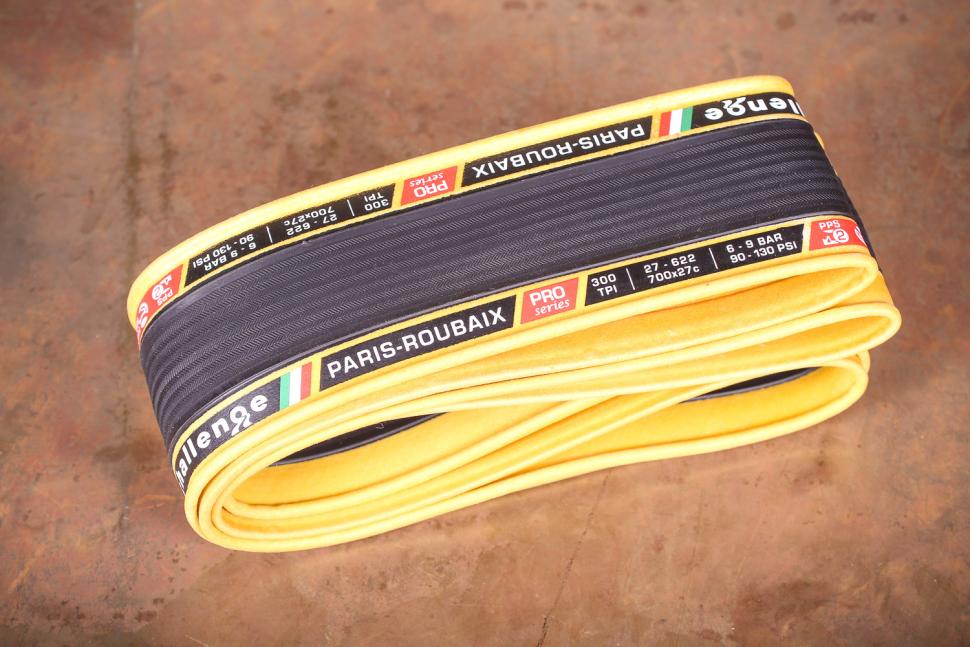
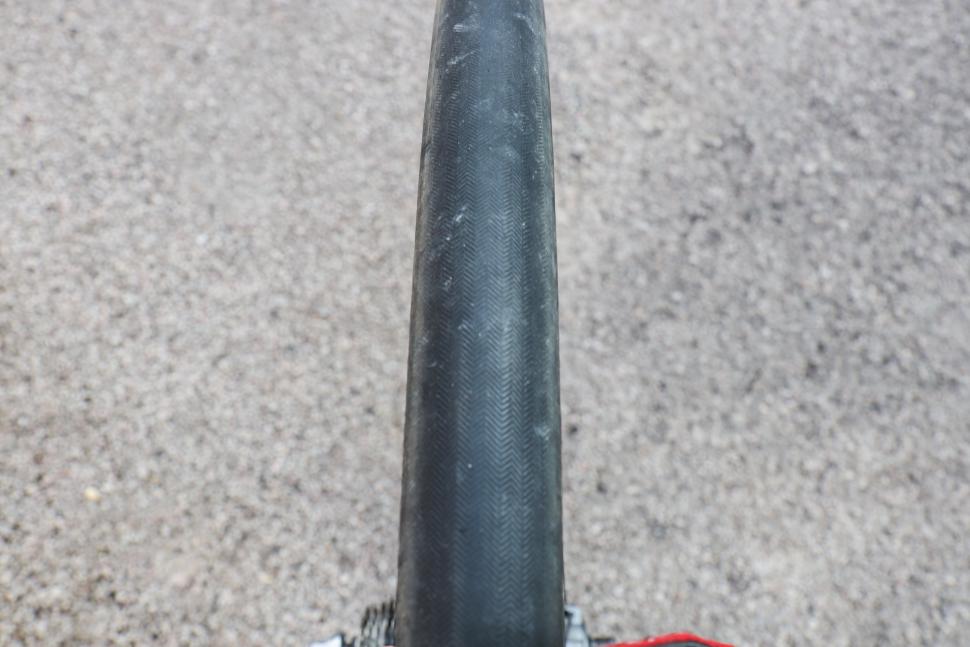
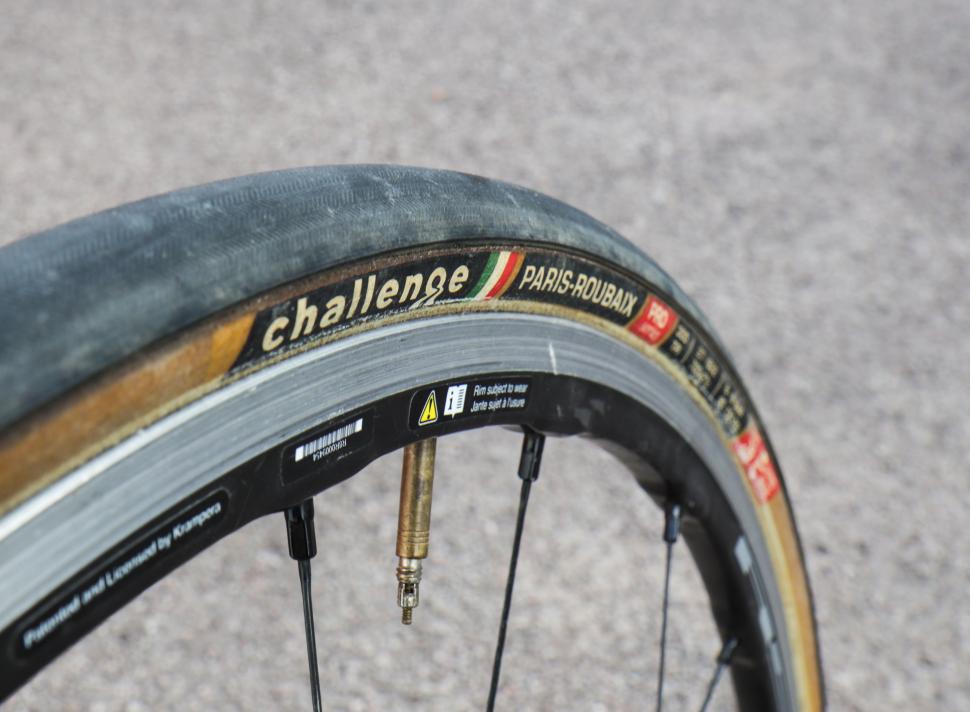

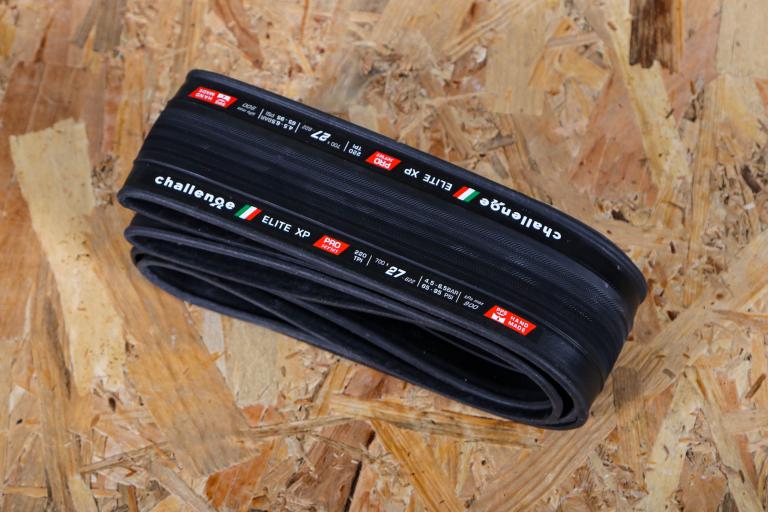
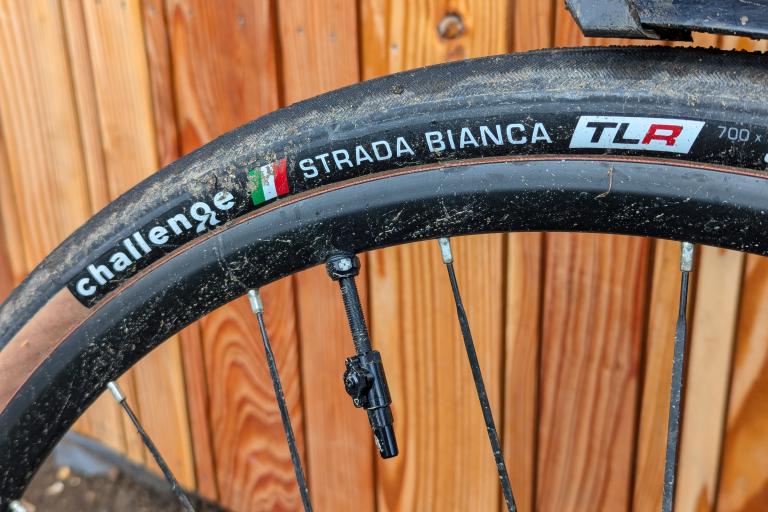
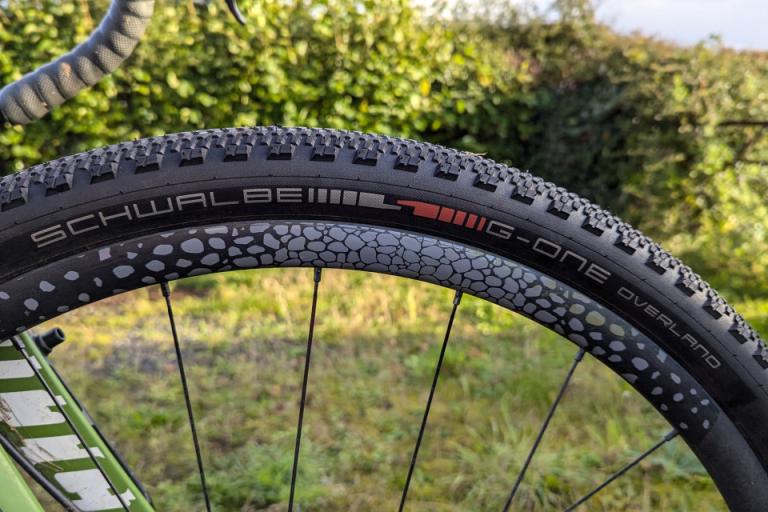
Add new comment
19 comments
Whoops, hit the save button too soon! To continue: there are many complaints around the internet about the difficulty of mounting Challenge tyres—why is this not mentioned in reviews? Why are "details" like this glossed over? Part of the function of a tyre is to be easily mountable and replaceable/repairable in the field. No matter how well they roll, there's no point to tyres that you can't get on or off the rim without a struggle or within, at a maximum, 30 mins. Tubulars can take a long time to get glued but they're not difficult to do and you know (mostly) that they're going to roll well. Challenge tyres are simply too difficult to fit and, IME, too fragile to be worth the effort or the money. There are plenty of better alternatives. For instance, I've found Compass tyres offer geat performance without the ridiculous hassles of Challenge tyres.
I can only hope they've improved these tyres since I tried some maybe 4 or 5 years ago. They were very very difficult to mount and unmount from any rim I had, were pathetically vulnerable to puncturing, and wore to paper thin within less than 400 kms. I threw them away after yet another 3-puncture day. Recently, I was pursuaded by a LBS to try the Strada Bianca Pro. These were not just difficult to mount but IMPOSSIBLE to mount on either HED Belgium Plus, HED Belgium, Bontrager Aeolus, a cheaper Bontrager, or a Mavic CX rim. I've got about 50 years experience building bikes and can pretty much do any maintenance on them. These are the first tyres I've been unable to get onto a rim. I know all about getting the beads in the centre channel, soap, chalk, talcum powder, heating the tyres &c. I've followed Challenge's advice on how to mount their tyres. The tyre simply cannot be fitted on the rim. Not even without a tube or rim tape. I've broken three tyre levers so far—normally I don't even use tyre levers. IME Challenge tyres are simply useless. Even if I could get these tyres on the rim what are the chances I could get it off?
Ive had the Pro version of the Strade Bianche (very close to the Paris - Roubaix) on my crap weather bike for a couple of years now.
They were a complete bastard to fit. I ran them, first time out, at 90 psi. They cut up like you would not believe and I punctured twice (front and back) within 15km thanks to grit and flints on the road (this was in January). They were also a complete bastard to remove to fix my puncture. I ended up using 45 mins and breaking a tyre lever in the cold, pissing rain.
After chucking them that day and running tubeless WTB Crosswolf CX tyres all winter I then went back to the Challenge tyres in the spring.
I now run them at 70 psi (I weigh 70kg or so) with anti puncture strips. Not one puncture since and they are very comfy, grippy tyres. Look cool too. Just be aware that they are made of a very, very soft compound and that they have absolutely no puncture protection.
I'll keep going back to my Giant PRSL2s, 28mm, 280g, roll fantastically well and are very puncture resistant, cost me peanuts to buy from Rutland at closeout and bought another new pair on ebay for £20 I was so impressed. I use them all year round but have recently bought some Panaracer Race A Evo 3s for my Sabbath September and they are coming up around 31mm on a H+Son TB14as, I can just about get them under the mudguards/brake arch of the shimano 650s. Hoping to finish the Sabbath build so can get to run them out but bicycle rolling resistance sems to rate them quite well, particularly in the puncture score. The 28s also come up similar weight to the Giant tyres.
Sometimes tyres are such a lottery and when you're paying big bucks and don't get what you expected it's a real let down, pardon the pun.
These are £20 a pop at Planet X:
https://www.planetx.co.uk/i/q/TYCHOPPARO/challenge-open-paris-roubaix-70...
For that price I'd willing to put up with some hassle with regards to fitting them.
Fitting them entirely depends on the rim.
On Classic Mavic Open Pro's the dificulties is actually to avoid the Pargi-Roubaix to blow OFF the rim.They are not a tight fit at all.
Those aren't the 300 tpi Pro version, just the cheaper nylon 120 tpi "vulcanised" model.
http://www.challengetech.it/products/road/paris-roubaix-064/en
This - bit cheeky as the first bullet point feature is "TPI 300 Bead Aramid Carcass" but the image is of the 120TPI Race (image is the same as the Challenge one, label looks to say "Race" in black-on-white). I suppose it's possible they've just nicked the wrong image from the Challenge site but i'd check before buying - sounds like reippuert may have got the Pro SC version though.
Tyre manufactures don't help in this regard sometimes - I had the same issue when buying some Schwalbe Pro Ones from them but there are so many versions sharing product names it gets confusing. WTB are the same - for example for the Nano you've got (from memory) Race - £15, Comp £30, TCS £40
When i got mine form Planet-X i assumed it was the 60TPI edition or if i was lucky the 120TPI vulcanisied for 13£ - plessantly surprised to see its in fact the the 300TPI open tubular .
Its not the SC, its the regular Pro edition (classic) but in 300TPI instead of 330TPI.
Its a steal... but be aware they blow up really big 29.6mm on classic 14mm internal with Open Pro rims. Posibly even larger on modern 17-19mm rims.
Then the deal is brilliant for a fantastic tyre. The picture just needs changing.
I ran them last Winter with latex inners and had no punctures.
Difficult to put on but well worth it for the ride. I took them off for the Summer and the put them back on 2 weeks ago and this time I could fit them by hand, so they do stretch a fiar amount.
I'd love to see a head-to-head of these against the less expensive, vulcanized, 120TPI "Race" version of the same tire. Specifically, I wonder how much of the ride magic goes away with the cheaper tire, and does the more conventional construction make them easier to mount. 120TPI vs 300TPI should mean a noticible reduction in suppleness, but the 120TPI tires have a single layer puncture belt, vs 2 for the "PRO" model, and weight 100g less, so maybe the ride quality is close?
I have used a couple of pairs o thes in 30mmm and overall they are very nice tyres.
2 points though.
They go on very easily I find. However when new and thus flat they are a pig to get a tube into. The tube wants to sit under the bead of the tyre and gets trapped when inflating if care is not taken. This then explodes! Not so bad once you know how but a pig first time.
They are fragile. My first pair fell apart way before the tread wore. The red strip inside, the puncture proofing I guess, came unstuck from the main carcase. I mentioned this to the importers who told me, in virtually these words, that they are a Sunday best tyre. They were replaced though.
I use them for all sorts of riding. Summer road tyres that allow me to use bad roads and gravel if so wished and when worn they become my gravel tyres and I accept the odd puncture.
Nice to ride but tubeless offers much more.
I have 27 mm Paris-Roubaix on my road bike and 30 mm Strada Bianca, which is very similar to Paris-Roubaix only wider, on another bike. I love both. The ride quality is exceptional, I completely agree with the article. However I must disagree with the other claims, that is the difficulty to install the tire and the lacking protection. Indeed, when I first got the Strada Bianca it took me more than an hour and a bucket of sweat to put it, - but then I figured that I should've used two tire levers, and this basically solved the problem. Fitting fresh Paris-Roubaix with two tire levers took me the same time as any other tire. Fixing a puncture on the road is not a problem at all, after being fitted for the first time the tire quickly takes the shape of the rim, taking it off and re-installing is possible with bare hands with a minimal effort. I did it twice, I had two punctures during more than 3000 km in total for both tires, first time it was a nasty thorn local to my area that can penetrate virtually anything, second time it was something sharp that essentially slashed the tire damaging the casing and leaving a 5 mm wide cut. I rode more than 500 km since that and the tire surprisingly still holds. I'd say that for me the protection looks more than adequate.
However, the best part is not only the ride quality and the apparent duralibility, - what I find truly remarkable is the fact that the tire still feels like a new after more than 2000 km, other high-end tires (Corsa, Conti GPII) start to feel dull getting to this mileage or even much earlier, in the worst case they are starting to get punctures, the rubber start to crack and even peel apparently due to degradation of the tire casing and the tread. Nothing like this with Paris-Roubaix, there is no signs of rubber changing its qualities and the casing is as soft and supple as new.
Clearly this isn't a racing tire, the aforementioned Corsa or GPII have much better racing or climbing feel. However, Paris-Roubaix is very close, and multiplied by its sturdiness and longevity it makes it for me probably the best training tire that I ever had.
Forgot to mention that the tires behaved very well on local unpaved roads where I brough them on numerous occasions. Crushed rocks, occasional sand patches, dirt, sudden steep climbs and descents - clearly a road bike won't be as fast as a dedicated machine in this environment, but Paris-Roubaix behaved quite confident and even inspiring.
I have a pair of challenge tyres. Fitting them on rims is probably one of the worst experiences I have had with a bicycle (and I have fallen and broken bones). Certainly high quality, hand made... but so ridiculously tight that just imagining trying to change a flat with them on is enough for me to not use them.
This sort of feedback is what put me off Challenge tyres. The Veloflex need a small amount of initial persuasion but no worse than some Conti tyres, and once on replacement via a puncture is a thumbs-only job.
I run Veloflex Master 25s most of the year and I've been impressed with the ride quality - I recognise your comment about the suppleness and give. Back on Gators for the winter and there's more road buzz, evidenced by numb fingers making a reappearance.
They're a similar TPI to the Challenge tyres, come in en vogue tanwall (also coloured tread versions if you must) and go on easy-ish (my rims are 19mm). Label is printed directly on the tread so does eventually rub off but they look cool, particularly on a black rim. Hesitate to say it but zero punctures for me and that's riding on New Forest roads and flat chalk paths on Salisbury Plain.
Availability can be an issue - particularly the 28s - but if you can find them (Bike24 have them but postage ups the price) they typically come in at around £30 which is a bargain for a handmade Italian artisan tyre. Can't think of another 320TPI tyre at that price?
these Challenge, though they are only 300TPI ... picked up pair at 13£ a piece from planet-x this summer and liked their ride so much that i endned up ordering 4 more (Mounted on a pair of classic Mavic OpenPro Ceramic rims where they balloon up to 29.6mm - perfect for credit card touring a ligt gravel riding).
... picked up pair at 13£ a piece from planet-x this summer and liked their ride so much that i endned up ordering 4 more (Mounted on a pair of classic Mavic OpenPro Ceramic rims where they balloon up to 29.6mm - perfect for credit card touring a ligt gravel riding).
Im actually surprised by the PRB pucture protection layer which is thin nylon strip glued to the inner tyre. no flats...
I have been exclusively on tubulars and tubless for the past +4y. My last set of clincher tires for my trusty Open Pro wheels where: Velofelx 25's which tends to puncture much easier.